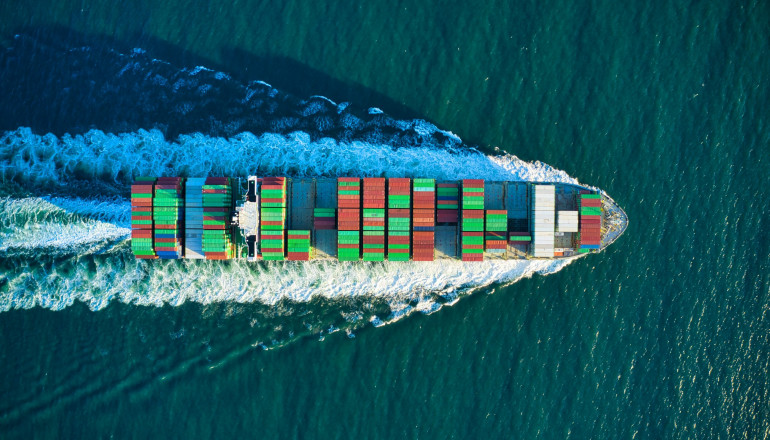Why ocean action is climate action
The UN High Level Champions are urging industries to take action to contribute to reversing blue carbon ecosystems loss by 2030 and publicly report on their progress.
By Climate Champions | May 27, 2021
The ocean – covering 71% of the Earth’s surface – will play a critical role in constraining global temperatures to 1.5˚C. Not only does it absorb 93% of the additional heat from rising manmade CO2 emissions, it absorbs approximately 25-30% of these emissions that would otherwise remain in the atmosphere and increase global warming.
Nature-based solutions provided by coastal ecosystems (such as mangroves, tidal marshes, coral reefs, sand dunes, seagrass beds and seaweed) hold great potential for both mitigation and adaptation to climate change. Blue carbon ecosystems sequester and store more carbon per unit area than terrestrial forests and can help safeguard coastal cities, communities and businesses from a changing climate. In addition, ocean-based industries, such as zero-emission shipping, offshore wind and aquaculture and fisheries can greatly contribute to a net zero economy.
But the ocean and its organisms, habitats, ecosystems, resources and the key services it provides are under heightened pressure from multiple threats. First on the list are climate change-driven stressors, which are exacerbated by other human-induced pressures such as pollution, eutrophication, habitat destruction and unsustainable use of aquatic living resources.
We need to launch a global movement of ocean stakeholders to both commit to reduce their carbon emissions and take actions to reverse marine ecosystems loss.
It is therefore vital that the ocean and coastal zones are safeguarded to keep temperatures below 1.5 C. At the same time, political leaders must provide the enabling environment for sustainable ocean business to operate, in order to secure sustainable and reliable access to climate-resilient low-carbon food, energy and transportation for a growing world population.
Driving action
To spur this ambition on, the UN High Level Champions this week released a cornerstone document for ocean-climate action that plots a pathway of milestones for ocean stakeholders to abide by in order to deliver a 1.5°C resilient world by 2050.
Speaking at the Virtual Ocean Dialogues this week, Gonzalo Muñoz, Chile’s High-Level Climate Action Champion, said: “If we want ocean based climate solutions to be at the forefront of the negotiations in Glasgow and be part of our future, governments need to see more and more companies, investors and cities joining the Race to Zero and Race to Resilience.”
“COP25 has been a major milestone to strengthen the ocean-climate agenda. Now, we need to launch a global movement of ocean stakeholders to both commit to reduce their carbon emissions and take actions to reverse marine ecosystems loss,” he added.
The Climate Action Pathway for Oceans & Coastal Zones argues that key drivers must include: “wide-ranging political and societal recognition of the vital role the ocean plays in both climate regulation, adaptation and mitigation”; “a sustainable and equitable well-managed ocean”; and “increased public and private investments”.
In addition, the report recommends the urgent implementation of “change levers” that encompass: nature-based solutions; aquatic food production; zero-emission shipping; and ocean renewable energy.

Whilst decarbonizing, the shipping sector must also assess, reduce and avoid its negative impacts on marine biodiversity.
The report calls on national governments to increase the recognition of ocean nature-based solutions, especially coastal blue carbon ecosystems, in their nationally determined contributions (NDCs) for both their mitigation and adaptation components “in order to pave the way for action and broad-scale finance mobilization”.
Companies, it also suggests, should – at the very least – eliminate activities in their supply chains that contribute to the destruction of marine and coastal ecosystems and identify actions to protect and restore ocean ecosystems. These actions would contribute to reverse blue carbon ecosystems loss by 2030, it states.
Aquaculture represents “an opportunity to increase the production of sea-based proteins and can provide alternative livelihoods for fishers and fish workers”. At the same time, it cautions that mismanagement of aquaculture might pose additional stress on marine environments through pollution and habitat destruction, affecting marine biodiversity and marine ecosystems.
On shipping, the report urges the industry to achieve 5% of propulsion energy from zero-carbon fuels for international shipping by 2030. It cautions, however, that in the transition to a zero emission energy, the shipping sector must assess, reduce and avoid its negative impacts on marine biodiversity.
Meanwhile, offshore wind is positioned as a key solution for net zero energy systems by 2050. It also represents a “business opportunity for a series of actors”, in particular, oil and gas companies. “While shifting their portfolio to renewable energy [oil and gas companies] can use their expertise and knowledge for large-scale marine engineering and fabrication of offshore energy infrastructure,” it suggests.
As the world accelerates its transition to a net-zero and resilient future, and recovers from the COVID-19 pandemic, green maritime transport, offshore renewable energy, nature-based ocean solutions, and sustainable low carbon seafood, represent critical solutions.


